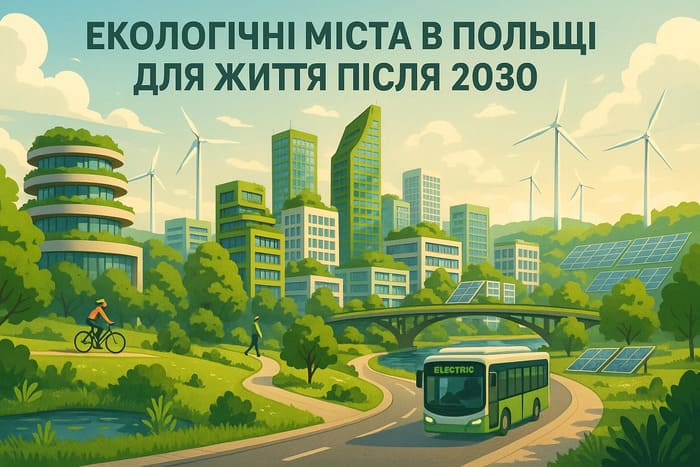Why Sustainable Living Is Becoming a Priority: The Role of Eco-Cities in a Changing World. In recent years, sustainable living has shifted from being a lifestyle choice to an urgent global priority.
The growing impacts of climate change — rising temperatures, extreme weather events, and biodiversity loss. Have made it clear that immediate action is necessary to protect both the planet and future generations. Rapid urbanization adds to this challenge, as cities consume over 70% of the world’s energy and produce the majority of greenhouse gas emissions.
However, cities are not only part of the problem; they can also become key drivers of sustainable development. Innovative “eco-cities” are emerging as models for environmentally friendly urban life, combining green technologies, renewable energy, and efficient resource management.
These urban centers demonstrate how thoughtful planning and smart infrastructure can reduce environmental impact while improving the quality of life for their residents.
Green City Criteria
| Criteria | Description |
|---|---|
| Sustainable Transport | Development of public transport, promotion of cycling and walking, reduction of car dependency. |
| Energy Efficiency | Use of renewable energy sources, energy-saving technologies, and smart building design. |
| Green Spaces | Creation and maintenance of parks, urban forests, and green roofs to improve air quality and biodiversity. |
| Waste Management | Recycling, composting, and reducing waste generation through sustainable consumption practices. |
The transition to green cities is essential for addressing the urgent challenges of climate change and rapid urbanization. By prioritizing sustainable transport, energy efficiency, green spaces, and effective waste management, cities can significantly reduce their environmental footprint while enhancing the quality of life for their residents.
Moreover, incorporating additional factors such as water management, digital innovation, and community engagement ensures a holistic approach to urban sustainability.
Ultimately, eco-cities serve as vital models demonstrating how urban areas can lead the way toward a more sustainable and resilient future.
Poland’s National Strategy
Poland has set ambitious goals for sustainable development through its national strategy extending to 2030 and beyond. Central to this vision is the implementation of the “Green Deal” (also known as the “Green Course”), which aligns with the European Union’s broader Green Deal framework aimed at achieving climate neutrality by 2050.
Key national initiatives focus on accelerating the transition to renewable energy, improving energy efficiency, modernizing transport infrastructure, and promoting circular economy principles. These efforts are supported by substantial funding from the European Union, including investments through the EU’s recovery and resilience plans, cohesion funds, and dedicated climate action programs.
Together, these strategic measures position Poland to not only meet its climate commitments but also to foster economic growth, create green jobs, and improve the quality of life for its citizens.
Top 5 Eco-Friendly Cities in Poland by 2030
Poland is making significant strides towards sustainable urban development, with several cities leading the way in environmental initiatives and green innovation.
Below is a list of the top 5 eco-friendly cities in Poland, highlighting their key strengths and potential to drive sustainability efforts beyond 2030.
| City | Key Strengths & Potential for 2030+ |
|---|---|
| Katowice | Leader in renewable energy transition, strong eco-innovation hubs, active in smart city projects. |
| Warsaw | Largest investment in green infrastructure, expansion of public transport, and ambitious climate action plans. |
| Wrocław | Extensive green spaces, sustainable public transport development, focus on circular economy. |
| Gdańsk | Coastal city with emphasis on marine ecosystem protection and clean energy initiatives. |
| Kraków | Efforts to reduce air pollution, energy-efficient buildings, promotion of sustainable mobility. |
Comparison with EU Cities
Poland’s eco-cities are making significant progress, yet when compared to leading European countries like Germany, Czechia, and the Scandinavian nations, there are still challenges to overcome. German cities such as Berlin and Hamburg are global pioneers in sustainable urban planning, boasting advanced renewable energy integration, extensive cycling infrastructure, and ambitious carbon neutrality goals.
Similarly, Czech cities like Prague are rapidly improving their green spaces and public transportation, aligning closely with EU climate targets. Meanwhile, Scandinavian cities — including Stockholm, Copenhagen, and Oslo. Are often seen as global benchmarks for sustainability, with widespread use of electric vehicles, smart energy systems, and comprehensive waste management programs.
Poland’s urban centers are increasingly adopting these best practices, supported by EU funding and national strategies. But they still face hurdles related to industrial legacy, air pollution, and infrastructure modernization. Continued investment and policy focus are essential for Polish cities to close the gap and emerge as leaders in the European green transition.
Where to Live Sustainably After 2030
As the world moves towards a more sustainable future, choosing where to live based on environmental quality and green infrastructure becomes increasingly important. Cities that prioritize eco-friendly development, clean energy, and smart urban planning will offer better quality of life, healthier environments, and more resilient communities.
Among Polish cities
- Katowice – By 2030, Katowice is expected to be one of Poland’s greenest and most innovative cities. Once an industrial hub, it is transforming into a center of renewable energy and smart technologies. Clean air initiatives, energy-efficient housing, and eco-friendly transport will make it highly attractive for those seeking a healthy and modern lifestyle.
- Warsaw – As the capital, Warsaw combines economic opportunities with ambitious climate strategies. By 2030, it will have advanced public transport, reduced car traffic, and more green spaces, improving air quality and urban comfort. For professionals in green technology, finance, and innovation, Warsaw will offer one of the best job markets in Central Europe.
- Wrocław – Wrocław will stand out for its quality of life, thanks to extensive parks, sustainable housing projects, and strong community involvement in environmental programs. It is ideal for families and people looking for a balance between nature, cultural life, and eco-friendly urban living.









